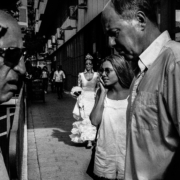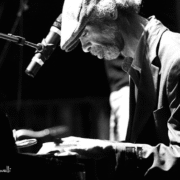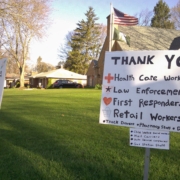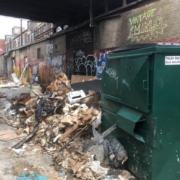What’s Graffiti & Street Art got to do with it?
If you are like most people, you drive or walk around the city focused on getting to your next destination. If you are driving hopefully you pay attention to other vehicles on the road, the traffic signs and lights, and the pedestrians who attempt or are in the process of crossing the road. If you are walking sometimes you multitask, with your eyes glued to your smart phone, trying to avoid others who are walking towards you and being careful not to bump into them. At other times you are daydreaming, thinking of a vacation you should take or the work you haven’t done. You get my point. Unless you’re a “flaneur” and wander the streets to take in its sights and smells, and look at interesting people walking by, you’re distracted and miss lots of stuff. For good reasons, you may have chosen to be oblivious to the vast external world around you.
In many ways ignoring what’s going on around you is efficient. We are constantly bombarded by lots of information (e.g., visual, auditory, olfactory, etc.) that tax our ability to process it all. We need to quickly and efficiently make sense of immediate situations to determine what information is important and what can be ignored. We also have limited attention spans, no doubt related to our level of interest, motivation, and urgency. This largely unconscious process means that we are missing many social and cultural messages directed at us.
The notion that we ignore all sorts of information that the urban environment bombards us with has been identified by many keen observers of human behavior. German philosopher Martin Heidegger, for example, argued that people have become “numb to their surroundings [and] view things in a hazy muted way.”
Graffiti and Street Art, one of the most notable aspects of street culture, and one of the most important art movements in the post-modern world we live in is one of those aspects of urban environments, that many people tend to ignore. Unless you are a graffiti or street art aficionado, or your property has been recently tagged you are bound to ignore it. Again, there are several reasons why this occurs. Graffiti and street art are ubiquitous. In every large city, if you care to look, and you don’t have to go very far, you will find graffiti and street art. In some cities like New York, London, or Paris this phenomenon is omnipresent.
Just like lots of things, we can probably function fine without really noticing or understanding graffiti and street art, but if we want a richer urban experience, and have some measure of control over it, it makes sense to learn a little about the nuances of these phenomena. I’m not talking about the ability to rattle off a bunch of names of infamous Graffiti and Street Artists, I’m referring to the ability to distinguish among different types, motivations for people engaging in Graffiti and Street Art, and the numerous reactions these activities produce.
Why is this important? If we do not understand graffiti and street art, we may witness or be subjected to constant battles between those who engage in this activity and those who seek to control it, but not be able to do anything about it.
So what? Under our noses, a subterranean battle over public space is taking place for dominance, notoriety, and recognition by those who engage in graffiti and street art, and control by forces that want to eliminate, minimize or redirect this activity. Again, So what? It’s important to develop a modicum of graffiti/street literacy if you want to better understand and maybe even have some sort of say over the visual landscape that you are exposed to on a daily basis. It’s important to understand the basics such as definitions, some of the major players, and here I am not simply talking about Banksy or Sheppard Fairy. There are web sites and exhibits that you can visit, and articles and books you can read. Better still most of this information is free or can be accessed at minimal cost.
Why? Understanding Graffiti and Street Art enhances your knowledge of contemporary urban and street culture – art is not just the stuff in museums; learning to appreciate graffiti and street art can change your view of the world, give new perspectives, expand your imagination, affect your well-being by enervating you, helping you to calm down, make you nostalgic, or bring a smile to your face. In short, it can make you feel alive and part of a community of people who share similar values, but also when they may have different viewpoints. Immersing yourself in this way gives you a sense of ownership, you live here, this is your city, you care for it, and eventually you’ll protect it and help it grow.
As note French Philosopher Henri Lefevre suggested (and echoed by people like Jane Jacobs, and David Harvey), we have a right to the city beyond the commodification engaged in by large monied interests (e.g., typically large powerful corporations). He said that over time the city will support the interests of capitalism and that this will dominate and rule our lives versus the other way round. Thus, if you care about the quality of your built urban environment, it is not only the duty and responsibility of local urban governments to protect the city, to ensure its sidewalks and pedestrian walkways, its open spaces, but it is first and foremost residents responsibility to ensure that this is done in their best interests. Graffiti and street art and other important kinds of urban art, help to make cities interesting, and are all part of this experience. Urbanites need to get involved in shaping these outcomes and this starts with understanding what you see, feel and experience and not operating like you are immune to the built environment.












